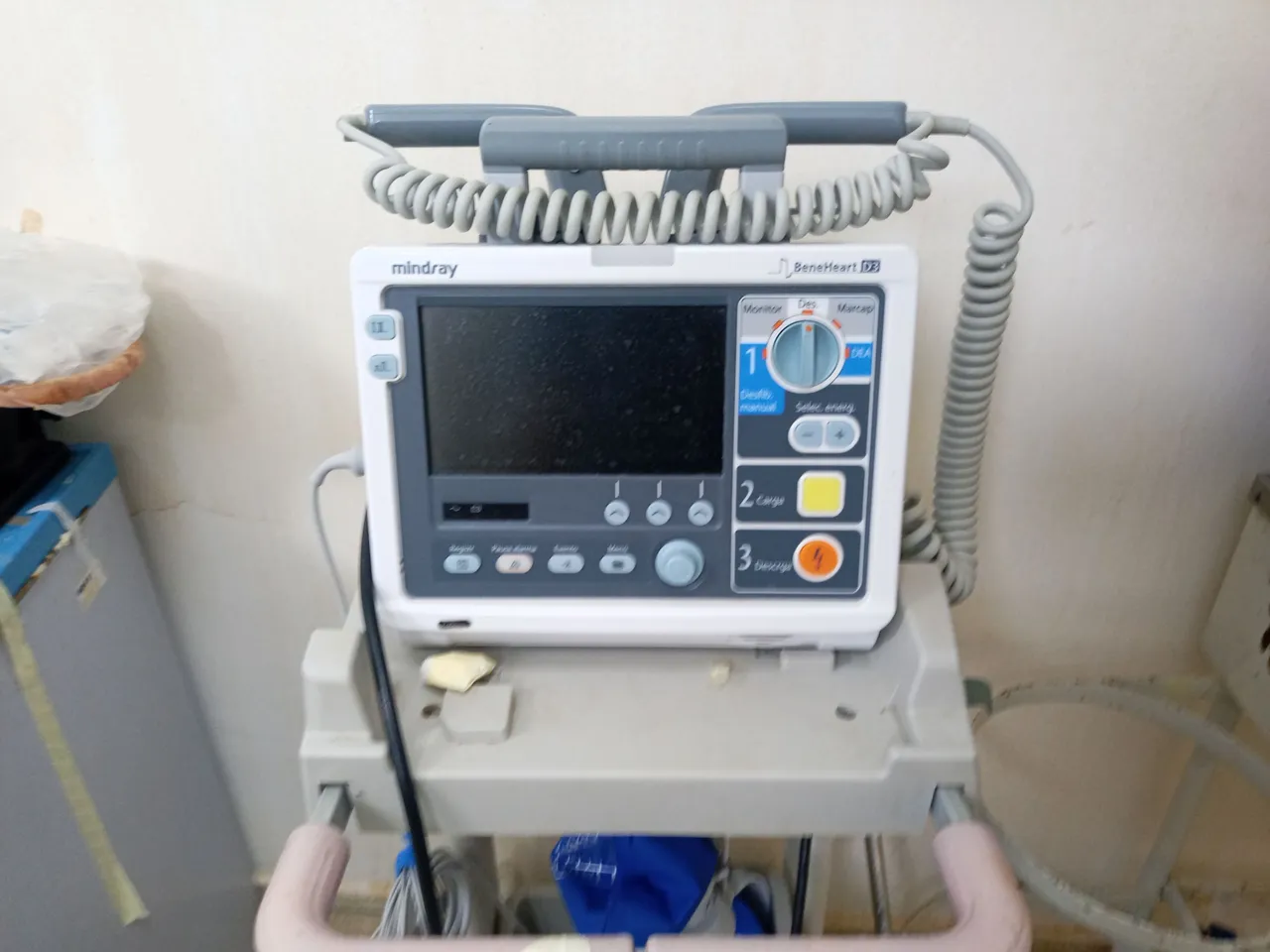
🏥Desfibrilador🏥
🏥Defibrillator🏥
Hola amigos, en esta ocasión les traigo un equipo muy importante para salvar vidas en momentos cruciales dentro y fuera del quirófano, así como dentro y fuera de un hospital. El desfibrilador es un equipo que puede salvar a una persona, pero si se usa mal o no se siguen las medidas de seguridad al usarlo, también puede quitarle la vida a una persona. Si quieres saber más, sigue leyendo y verás lo bueno que es este equipo.
Hello friends, this time I bring you a very important equipment to save lives in crucial moments in and out of the operating room, as well as in and out of a hospital. The defibrillator is a piece of equipment that can save a person, but if it is misused or if safety measures are not followed when using it, it can also take away a person's life. If you want to know more, read on and you will see how great this equipment is.

En abril de 2018, el futbolista Lassad Nouioui, de 32 años, sufrió una fibrilación ventricular durante un entrenamiento; otro caso es el del jugador danés Christian Eriksen, de 29 años, que sufrió una parada cardíaca durante un partido el año pasado, y podría seguir con muchos más casos, como el del jugador de baloncesto Tyvoris Salomon o el del baloncestista Walter Herrmann, que sufrió una arritmia cardíaca durante un partido.
In April 2018, the 32-year-old football player Lassad Nouioui suffered a ventricular fibrillation during training; another case is that of the 29-year-old Danish player Christian Eriksen who suffered a cardiac arrest during a game last year, and I could go on and on with many more cases, such as the basketball player Tyvoris Salomon or the basketball player Walter Herrmann who suffered a cardiac arrhythmia during a game.
Estos atletas tienen algo en común, y es que sobrevivieron porque recibieron una descarga con un desfibrilador a tiempo, otros permanecen con un desfibrilador implantado.
These athletes have one thing in common, which is that they survived because they were shocked with a defibrillator in a timely manner, others remain with an implanted defibrillator.
Para entenderlo, explicaré cuatro conceptos importantes que nos ayudarán a comprender cuándo utilizar un desfibrilador, cuándo no utilizarlo y cómo es el proceso de desfibrilación:
To understand this, I will explain four important concepts that will help us understand when to use a defibrillator, when not to use a defibrillator and what the defibrillation process is like:
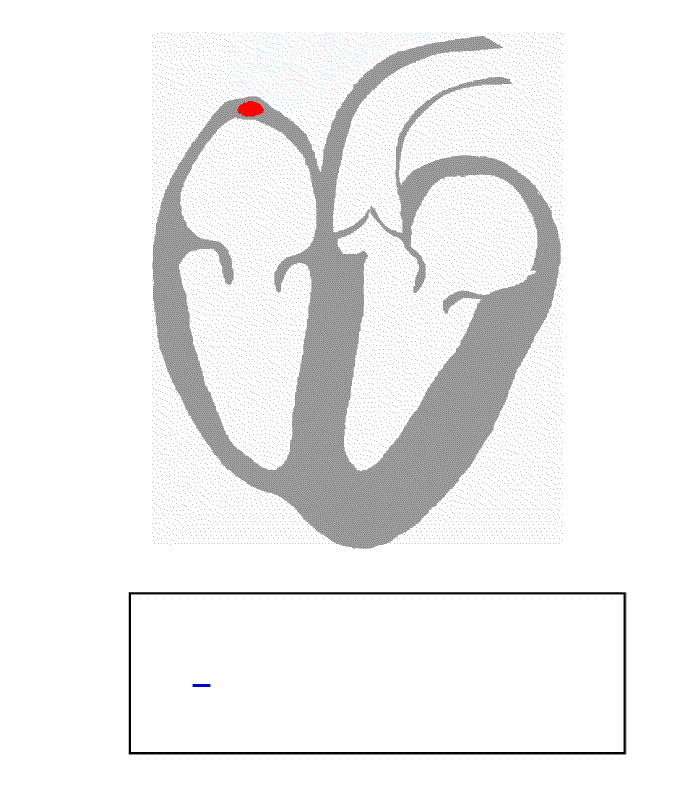
- Taquicardia: un ritmo cardíaco rápido que puede ser regular o irregular, pero que está fuera de proporción con la edad y el nivel de esfuerzo físico o actividad.
- Tachycardia: a rapid heartbeat that may be regular or irregular, but is out of proportion to age and level of physical exertion or activity.
- Bradicardia: disminución del ritmo de contracción del corazón por debajo de 60 latidos por minuto.
- Bradycardia: slowing of the heart's rate of contraction below 60 beats per minute.
- Arritmia cardíaca: latidos del corazón, ya sea irregulares, demasiados rápidos o demasiados lentos, esto ocurre cuando los impulsos del corazón no funcionan correctamente.
- Cardiac arrhythmia: heartbeat, either irregular, too fast or too slow, occurs when the heart's impulses do not work properly.
Nos vamos a centrar más en este último concepto, ya que son dos los aspectos que dan nombre al desfibrilador, empecemos por él:
We are going to focus more on this last concept, as there are two aspects that give the defibrillator its name, let's start with:
- Fibrilación Ventricular (FV): es el ritmo cardíaco rápido y potencialmente mortal que comienza en las cavidades inferiores del corazón.
- Ventricular Fibrillation (VF): is the rapid, life-threatening heart rhythm that begins in the lower chambers of the heart.

- Fibrilación auricular (FA): ritmo cardíaco irregular y ocasionalmente rápido, que a menudo provoca un flujo sanguíneo deficiente.
- Atrial fibrillation (AF): an irregular and occasionally rapid heart rhythm, often resulting in poor blood flow.
Es importante entender que estos dos últimos trastornos pueden llevar a la MUERTE CARDIACA SUBITA y esta no es lo mismo que ataque cardíaco o infarto al miocardio.
It is important to understand that the latter two conditions can lead to SUBITOUS HEART DEATH and this is not the same as a heart attack or myocardial infarction.
Si deseamos sacar a un paciente de un cuadro clínico de Fibrilación Ventricular, se debe hacer mediante una descarga eléctrica, es por esto que se le llama al equipo Desfibrilador. Y si se quiere emplear para sacar a un paciente de una Fibrilación Auricular se le llama Cardioversor.
If we want to get a patient out of a clinical picture of Ventricular Fibrillation, it must be done by means of an electric shock, which is why the equipment is called a Defibrillator. And if we want to remove a patient from Atrial Fibrillation, it is called a Cardioverter.

¿Pero a todas estas se preguntaran que es un Desfibrilador?
But what is a Defibrillator, you may ask?
Un desfibrilador es un equipo que suministra de manera programada y controlada, una descarga o choque eléctrico con el fin de corregir un desorden en el ritmo cardíaco.
A defibrillator is a device that delivers a programmed and controlled electrical shock to correct a heart rhythm disorder.
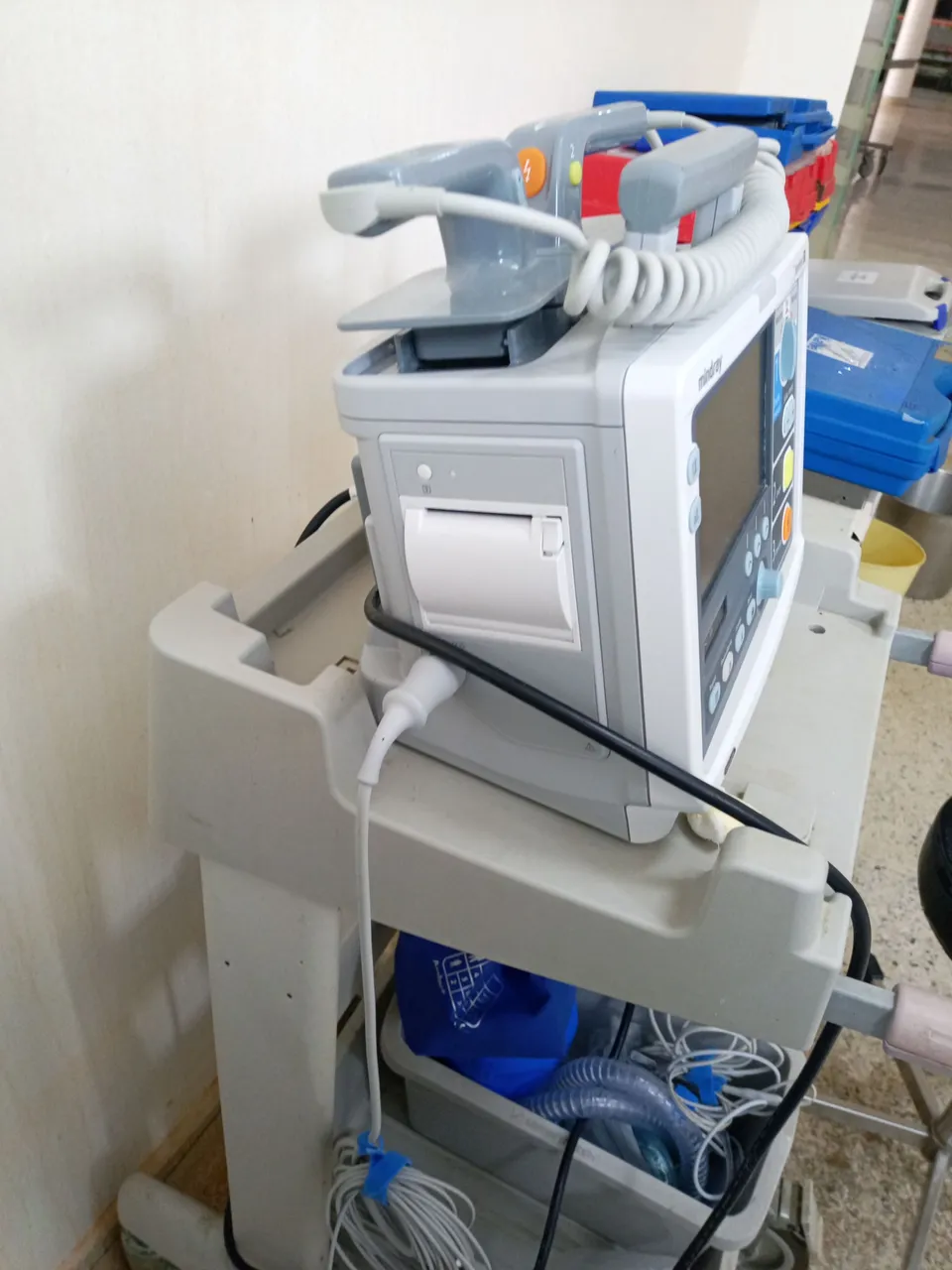
Existen dos tipos de desfibriladores los cuales son:
There are two types of defibrillators, which are:
- Desfibriladores Externos: en ellos se encuentra encuentran los automáticos (DEA) y los semiautomáticos (DESA), utilizados para la desfibrilación y cardioversión eléctrica urgente o programada.
- External Defibrillators: these include automatic defibrillators (AEDs) and semi-automatic defibrillators (AEDs), used for defibrillation and urgent or programmed electrical cardioversion.
- Desfibriladores Internos: pueden ser implantebles / permanentes en casos de pacientes previos a una Fibrilación Ventricular, o temporales en la cardioversión interna, indicada en paciente previos a una Fibrilación Auricular y que no responden a cardioversión externa.
- Internal Defibrillators: these can be implantable/permanent in pre-Atrial Fibrillation patients, or temporary in internal cardioversion, indicated in pre-Atrial Fibrillation patients who do not respond to external cardioversion.
Método de desfibrilación y Cardioversión
Defibrillation and Cardioversion Method
En amabas técnicas se aplican descargas eléctricas de alto voltaje, hablamos de unos 1500 a 5000 voltios, esto se logra por medio de una paletas o electrodos posicionadas en el pecho del paciente. La única diferencia de una a la otra es que en la desfibrilación se aplican energías mas altas de 2-4 J/Kg de manera asincrónica o brusca; mientras que en la cardioversión son energías de 0.5-1 J/Kg de manera sincronizada con el complejo QRS, específicamente en la onda R.
In both techniques, high voltage electrical shocks are applied, we are talking about 1500 to 5000 volts, this is achieved by means of paddles or electrodes positioned on the patient's chest. The only difference between the two is that in defibrillation, higher energies of 2-4 J/Kg are applied asynchronously or abruptly; whereas in cardioversion, energies of 0.5-1 J/Kg are applied synchronously with the QRS complex, specifically in the R wave.
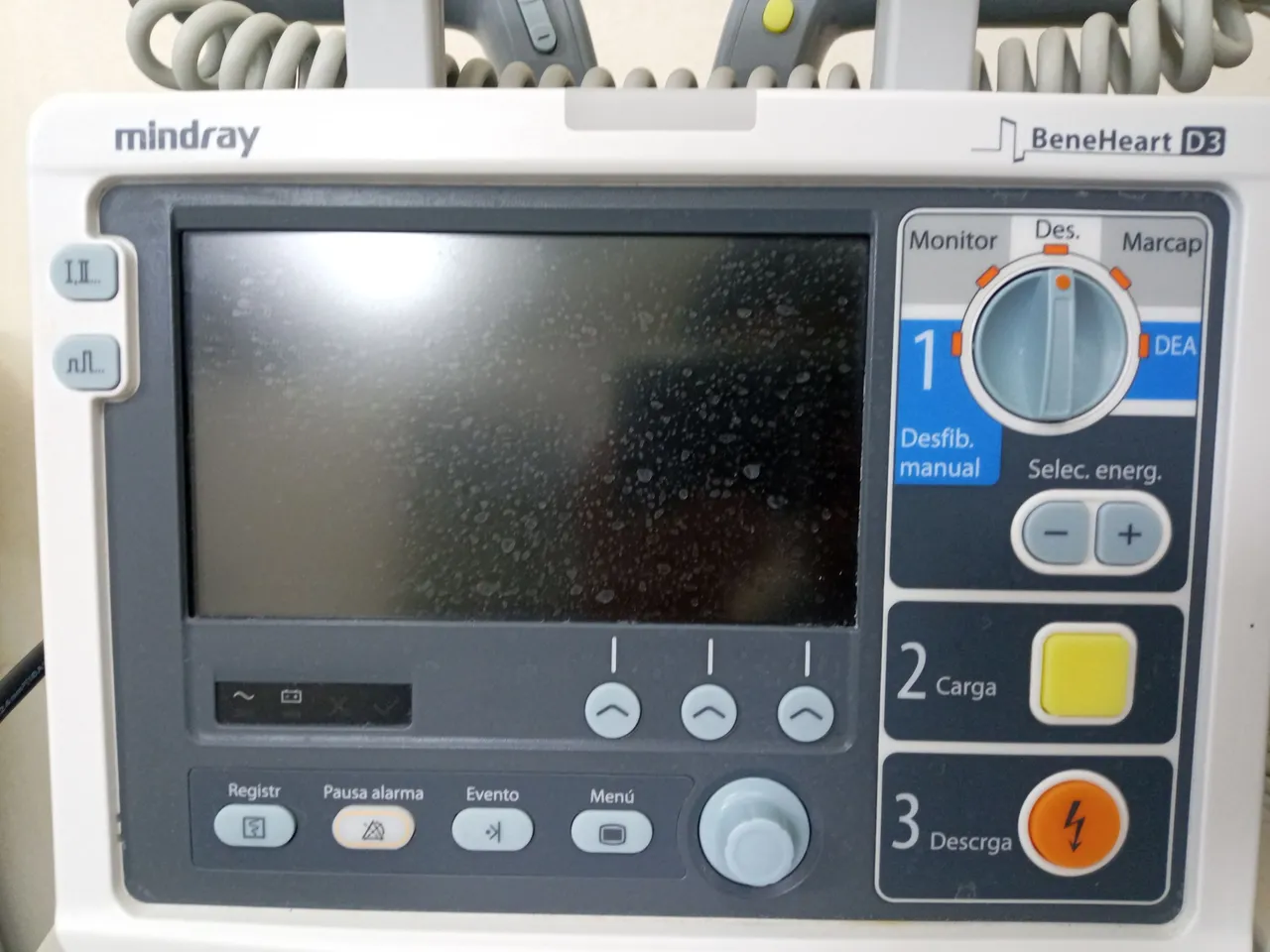
Factores que Influyen en el Éxito de la Desfibrilación
Factors Influencing Defibrillation Success
- El tiempo: mientras mas corto sea el tiempo de entre la fibrilación y la desfibrilación, es mayor la probabilidad de exito; por lo tanto si el tiempo es mayor el paciente puede fallecer.
- Time: the shorter the time between fibrillation and defibrillation, the greater the likelihood of success; therefore, if the time is longer, the patient may die.
- Posición de las paletas: las paletas deben colocarse en una posición correcta, de lo contrario no surtiría efecto la descarga.
- Position of the paddles: the paddles must be placed in the correct position, otherwise the discharge will not be effective.
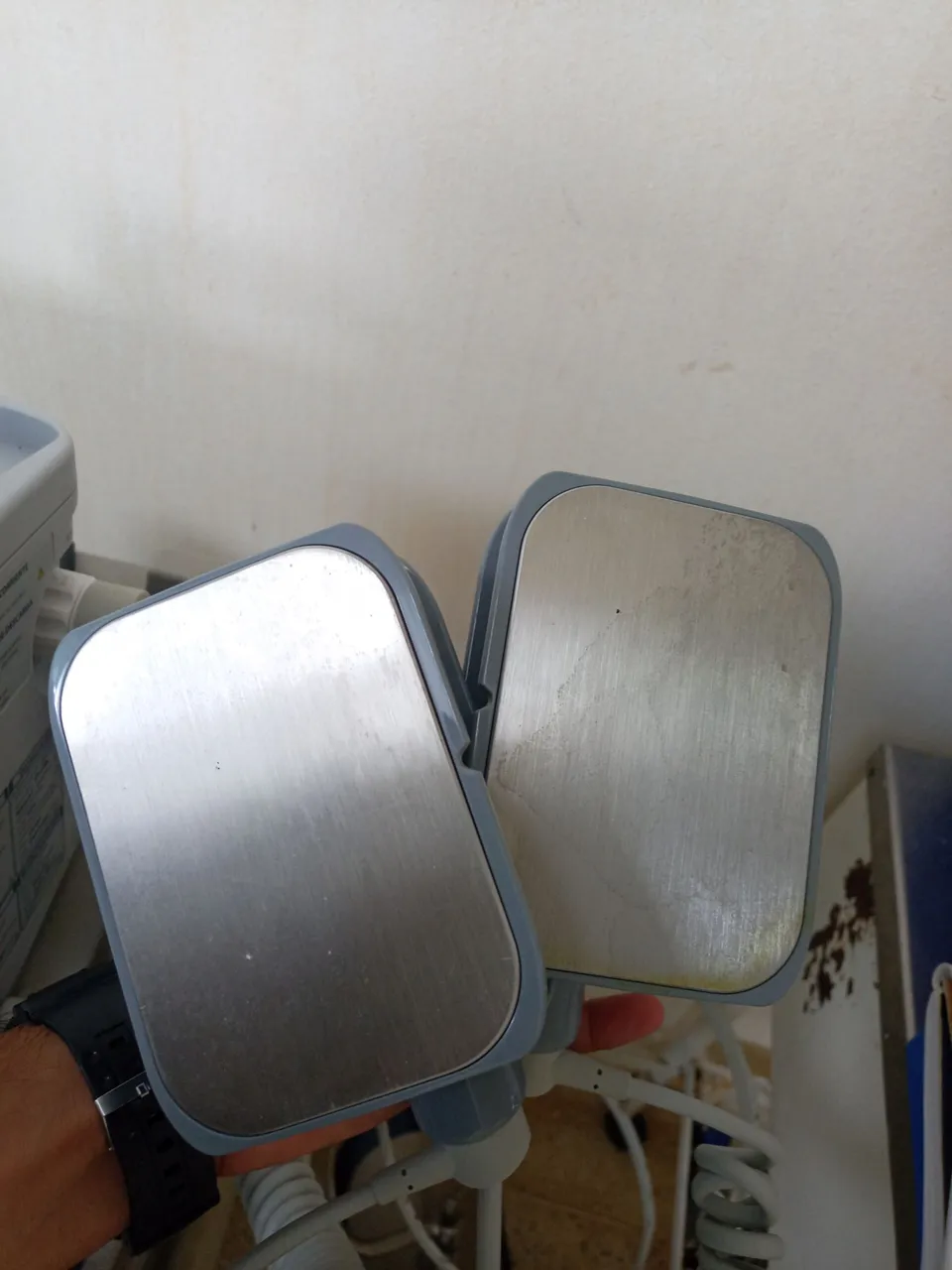
- El nivel de energía: la Asociación Cardíaca Americana recomienda que el primer choque o descarga sea de 200 julios, si este no tiene efecto; el segundo debe ser de entre 200 a 300 julios y si este no surte efecto las siguientes descargas deben ser de 360 julios.
- The energy level: the American Heart Association recommends that the first shock should be 200 joules, if this has no effect; the second shock should be between 200 to 300 joules and if this has no effect, the following shocks should be 360 joules.
Existen otros factores, pero estos son unos de los mas importantes, a conocimiento general.
There are other factors, but these are some of the most important ones, as far as is generally known.
Posición de las Paletas
Position of the Paddles
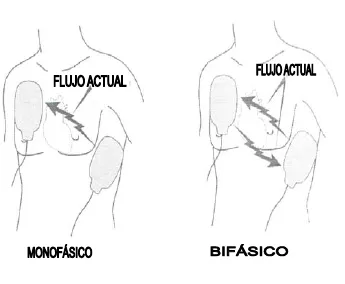
Las paletas deben ir de forma tal que el corazón (énfasis en los ventrículos), queden en la trayectoria de la corriente. Debido a que los huesos no son buenos conductores de electricidad, por lo tanto las paletas no deben colocarse sobre el esternón.
The paddles should be placed in such a way that the heart (emphasis on the ventricles) is in the path of the current. Because bones are not good conductors of electricity, therefore the paddles should not be placed on the sternum.
Partes de un Desfibrilador
Parts of a Defibrillator
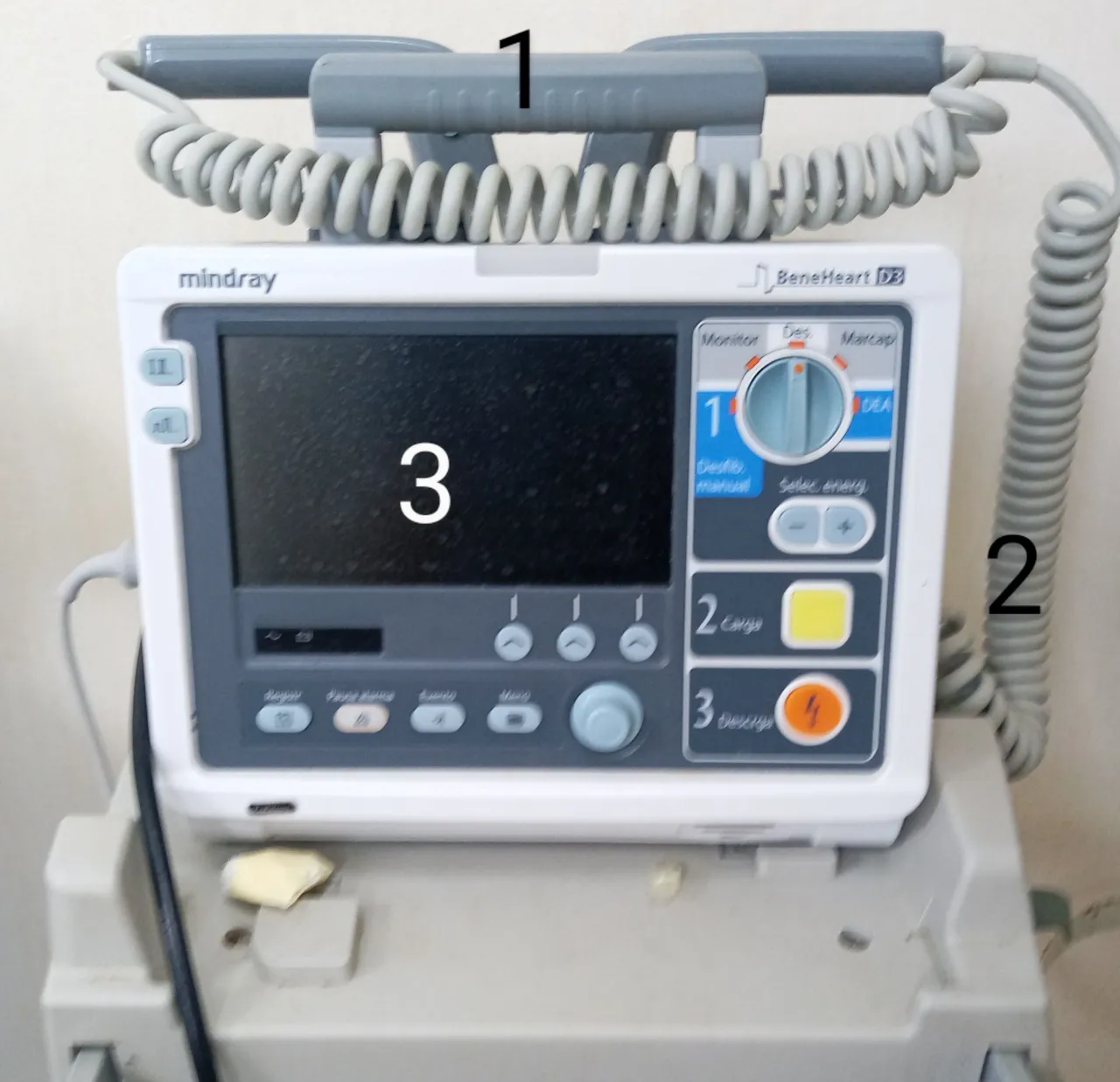
- 1. Paletas o Electrodos.
- 1. Paddles or Electrodes.
- 2. Panel de comandos.
- 2. Command panel.
- 3. Pantalla.
- 3. Screen.
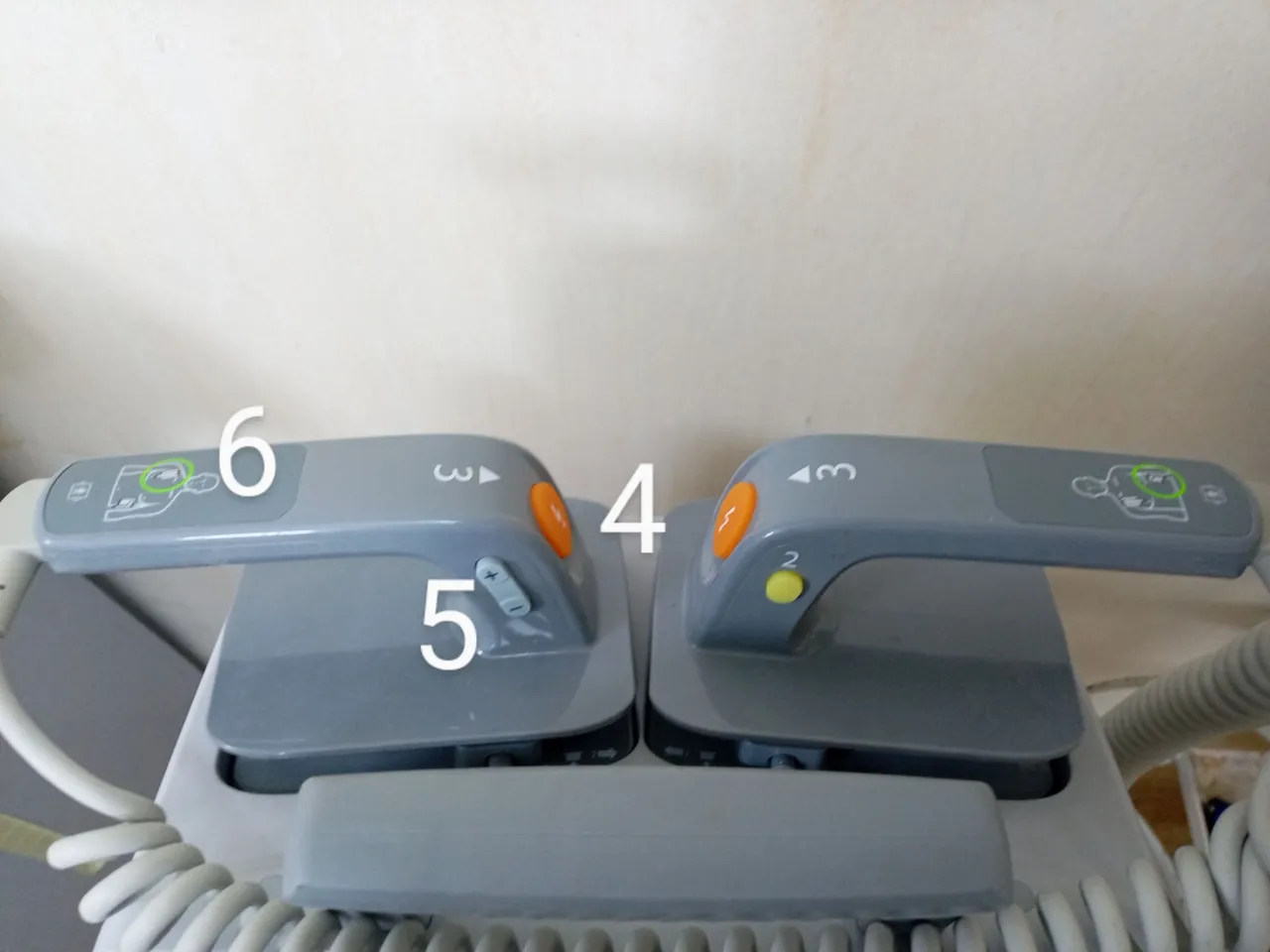
- 4. Botones de descarga.
- 4. Discharge buttons.
- 5. Selector de aumento o descenso de descarga.
- 5. Discharge increase or decrease selector.
- 6. Figura que muestra la posición de la paleta.
- 6.Figure showing paddle position

- 7. Impresora de señal ECG.
- 7.ECG signal printer.
- 8. Cable de Señal ECG.
- 8. ECG signal cable.
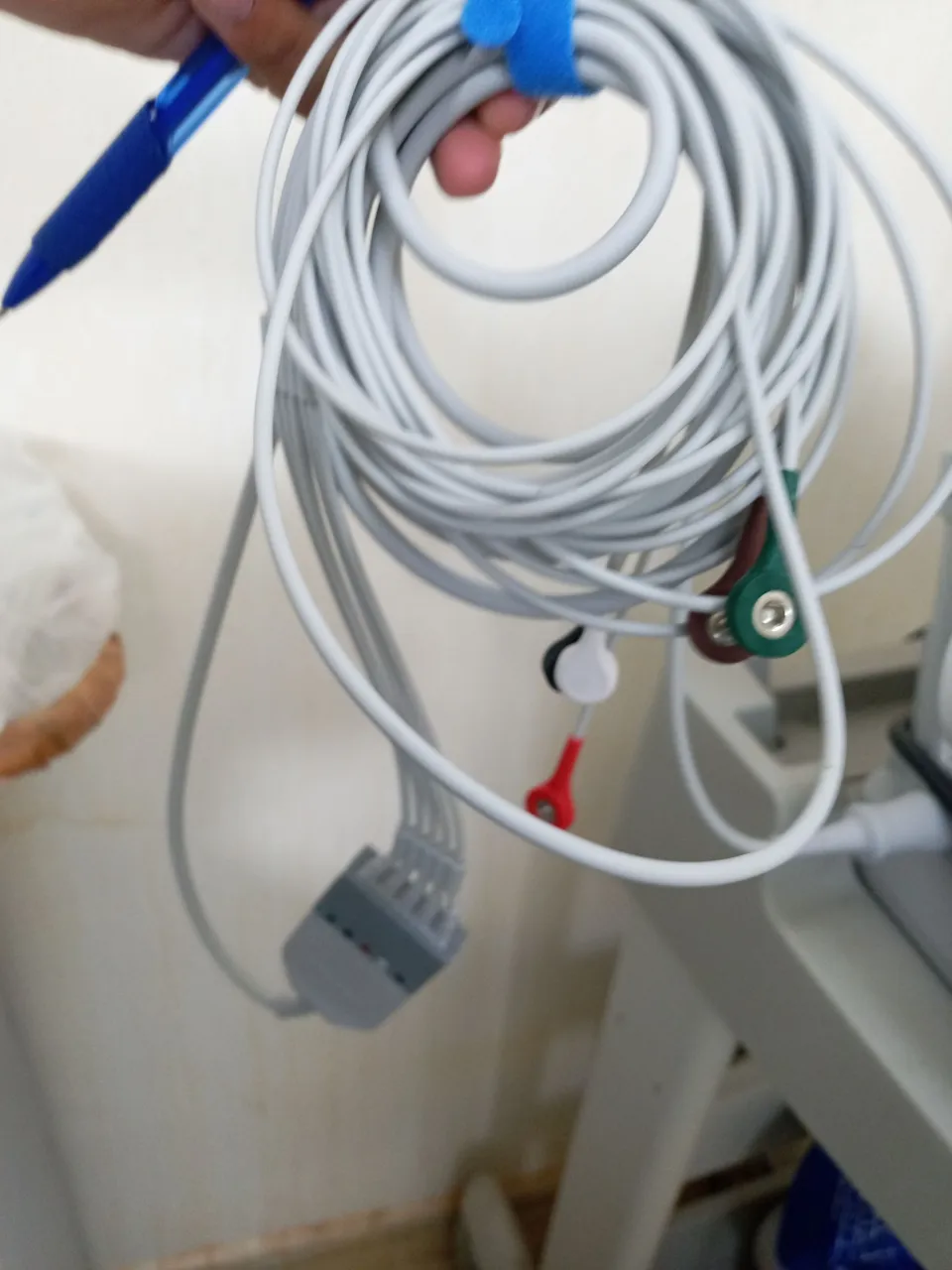
Procedimiento de Tres Pasos:
Three-step Procedure:
- Paso 1: seleccionar la energía a utilizar, en este momento al girar la perilla, el equipo enciende automáticamente.
- Step 1: select the power to be used, at this time by turning the knob, the equipment turns on automatically.
- Paso 2: Cargar el desfibrilador con la energía seleccionada.
- Step 2: Charge the defibrillator with the selected energy.
- Paso 3: Colocar las paletas sobre el paciente, estas deben estar impregnadas en gel electrolítico o pasta conductora; si es una desfibrilación colocar sobre el paciente y descargue, si es una Cardioversión la mejor manera es colocar las paletas sobre el paciente de una manera firme y sin movimiento, para que el equipo detecte bien la señal ECG y descargue el mismo equipo en la onda R.
- Step 3: Place the paddles on the patient, these should be impregnated with electrolyte gel or conductive paste; if it is a defibrillation place on the patient and discharge, if it is a Cardioversion the best way is to place the paddles on the patient in a firm way and without movement, so that the equipment detects the ECG signal well and discharges the same equipment in the R wave.

Seguridad al Utilizar el Equipo
Safety in the Use of Equipment
- Al momento de utilizar el equipo los primero requisitos que se tienen que hacer son lo siguientes.
- At the moment of using the equipment, the first requirements to be fulfilled are the following.
- Encienda el equipo y compruebe que este realiza el proceso de encendido de manera correcta.
- Switch on the equipment and check that it performs the power-up process correctly.
- Vivifique que el valor reflejado de descarga que se muestra en pantalla sea el mismo seleccionado.
- Verify that the reflected discharge value displayed on the screen is the same as the one selected.
- Mientras carga el equipo compruebe que cualquier persona se mantenga alejada del paciente. De lo contrario cual quier persona que mantenga contacto con este puede sufrir graves daños.
- While charging the device, make sure that all persons stay away from the patient. Failure to do so may result in serious injury to anyone who comes into contact with the patient.
Los equipos muestran con una luz verde cuando se encuentran listos para la descarga, esto se conoce como proceso de cargado; verifique que el proceso de cargado no dure mas de 3 segundos.
The devices show a green light when they are ready to discharge, this is known as the charging process; check that the charging process does not take more than 3 seconds.
- Por ultimo limpie el gel o la pasta conductora de las palas al terminar de utilizar el equipo, ya que estos al secarse generan un falso contacto con el paciente en una futura descarga.
Finally, clean the gel or conductive paste from the paddles when you have finished using the equipment, as these dry out and generate a false contact with the patient in a future discharge.

Espero que les haya gustado este post, no olvidés votar, compartir y seguirme para estar al día de toda la nueva información que subo sobre equipamiento médico.
I hope you liked this post, don't forget to vote, share and follow me to keep up to date with all the new information I upload about medical equipment.
Este contenido es de mi autoria.
La imagenes pertenecientes a otras paginas conservan su link de referencia, y las imagenes de mi autoria son realizadas con un smartphone.
This content is authored by me.
The images belonging to other pages keep their reference link, and the images of my authorship are made with a smartphone.
Enlaces de Interes / Links of Interest